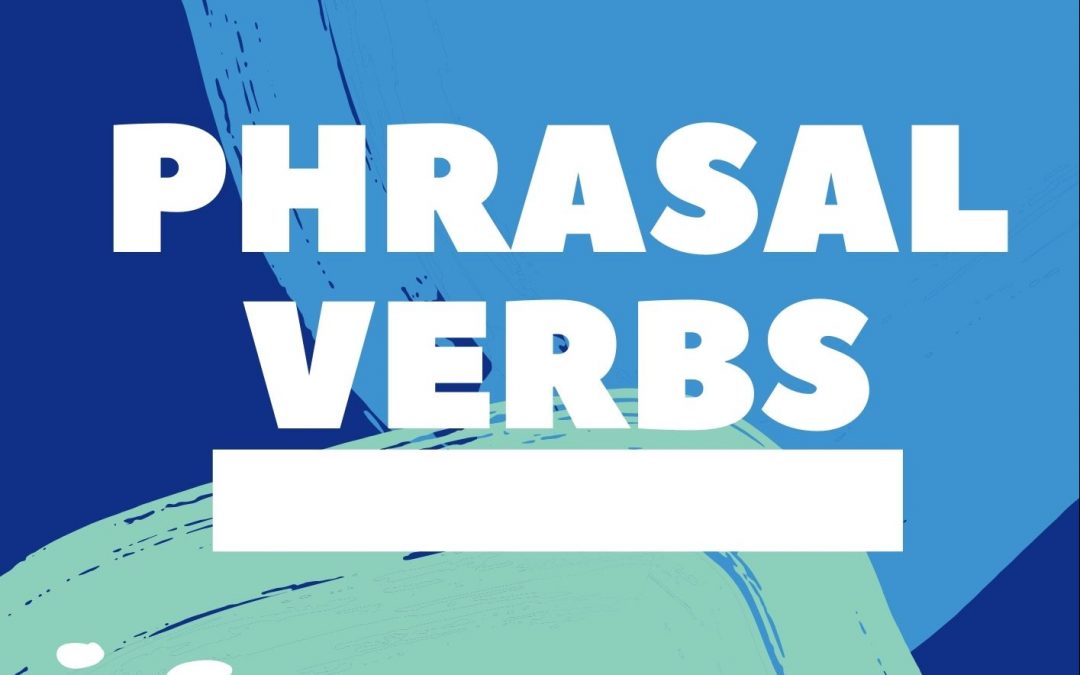In my last blog, I tried to explain how phrasal verbs enable native English speakers to go into detail about how they go up stairs (we walk up them, run up them or stagger up them drunk). If we move something else to a higher place, we generally just pick it up and take it up but if it’s a heavy thing, we might want to emphasise that we had to lift it up, carry it up or drag it up from the bottom.Essentially, the little word UP does most of the work by establishing the main meaning of “ascending” or “elevating”, so you’re free to choose almost any verb you like to give more detail or make your story more dramatic. Not only does “we hoisted it up to the third floor” sounds more interesting than “we took it up”, it also provides the extra information that you probably needed lifting apparatus (a “hoist”) using very few words.
This is why we love our phrasals so much: for natives, they’re a fast and flexible way to condense a lot of information into two or three words. The only thing that gives us problems is explaining to students how we do this, but I’m more and more convinced that focussing on the preposition (UP) is the best way forward.
Higher is More: UP for Increase and Improvement
If you accept that “basic” phrasals with UP tend to talk about ascending or elevating, it’s not a big jump to extend those meanings to a more general sense of “increasing” or “improving”. “Higher” is often the same as “more” or “better” (think of rankings and league tables), so when you heat up milk, you’re increasing the temperature and when you polish up or brush up your English, you’re improving it. Once again, the verb just gives the detail of what or how you “UP”.
Up to the Top: UP for Completion and Emphasis
Of course, if you keep increasing, elevating and improving, you will eventually hit a limit in many situations. A lot of phrasal verbs with UP emphasise that their verb has to reach this limit or maximum, and these are the phrasals where the preposition often seems unnecessary. To tidy up your desk is very similar to tidying it, but the phrasal adds the touch that you leave it perfect, at maximum tidiness. This ‘emphatic’ use appears in a lot of negative, colloquial phrasals like “you messed it up” or “shut up”, because the speaker is often angry. One of the most useful examples in this category is end up, as in “We ended up postponing the decision”. In most languages, the word UP is totally redundant here, but the English add it because we want that extra impact.
Growth is Generation: UP for Creation
With a bit more imagination, you can also include the classic grow up (as in “I grew up in England”) to this category. When you grow up, you get bigger (and maybe better) until you reach the top, which is adulthood (presumably). You can even go further and say that when your parents brought you up, in some sense they “built” you as an adult. Sometimes when we put something up (like a tent), the act is equivalent to creating a new thing, so you can set up a company or make up an excuse. Personally, I would also put the classic meeting phrases “it came up” or “I brought it up” in this category of generating or creating new things, but I accept that I might be pushing my luck here!
It’s true that this system of learning phrasal verbs by the meanings of their prepositions is still not perfect. Some are just too strange and idiomatic to explain logically, but they are the exceptions. I really think that it’s a more productive way for students to try to understand phrasals, and if you thing it might work for you, I’ll be looking at phrasals with DOWN in my next blog (then I’ll shut up about phrasals for a while, I promise!).


